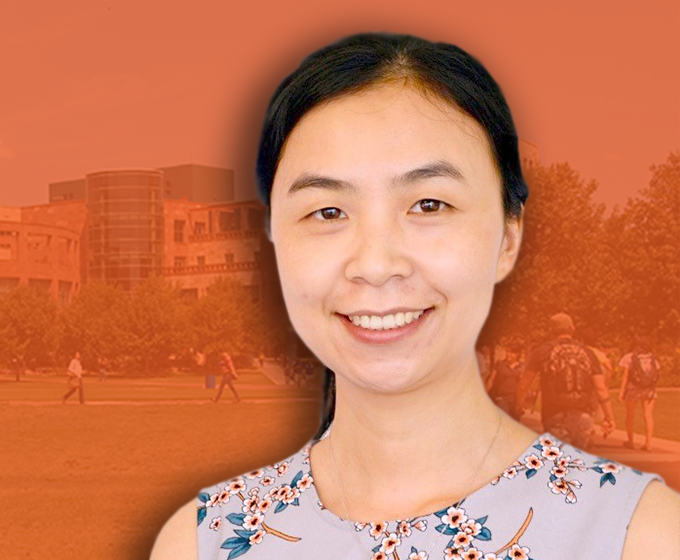Posted on August 24, 2021 by Amanda Cerreto
AUGUST 25, 2021 — Since San Antonio confirmed its first COVID-19 case more than one year ago, the pandemic and its subsequent social and economic fallouts have upended the lives of many. Although vaccine rollouts offer hope for a rapid economic recovery, many people are at risk of long-term economic distress.

Eric Shattuck
This factor of the pandemic was explored using data collected from the San Antonio Energy and Time Use Survey for residents in San Antonio zip codes 78202 and 78230. Launched in March 2021, Wenbo Wu , assistant professor of management science and statistics; Eric Shattuck , director of the Institute for Health Disparities Research; and Ying Huang , assistant professor of demography, began pulling key findings from the data and have released their first policy brief.
"It is the intersections of these dimensions that make communities and their residents vulnerable to catastrophes."
The brief presents evidence of alarming racial disparities in economic hardships and stalled employment recovery during the pandemic. Not only do racial disparities in other socioeconomic dimensions exist, they are persistent over time and have been exacerbated during the pandemic.

Ying Huang
"It is the intersections of these dimensions that make communities and their residents vulnerable to catastrophes," Huang said. “Mending them now can help ensure that these neighborhoods and the residents in these communities do not unjustly bear the brunt of future disasters.”
The researchers initially made three key discoveries from the survey data. They learned that most participants experienced economic hardships during the pandemic, racial inequalities prevailed in job loss, and disadvantaged neighborhoods are facing stalled employment recovery.
According to the survey, a considerable portion of households face challenges meeting their basic needs, such as making payments to mortgage/rent and utility bills. Hispanic families are much more likely than their non-Hispanic white counterparts to experience all types of hardships in both neighborhoods.
Since the start of the pandemic, the most-frequently experienced material hardship in both neighborhoods has been having trouble paying rent or a mortgage. The least prevalent hardship experienced among residents of both neighborhoods was delaying needed medical care or prescription medication.
According to the data, the rates of job loss vary little by neighborhood, but racial inequalities prevail regardless. Almost half of Hispanic households experienced job loss, compared to one-third of non-Hispanic white households. Although job loss varies little by neighborhood, the rates of job loss among non-Hispanic Blacks and Asian Americans are considerably lower than Hispanics and non-Hispanic whites.
Regardless of neighborhood, Hispanics outperformed other racial/ethnic groups in employment recovery. Although Hispanics were disproportionately impacted by the pandemic, they also appeared to be the ones that first recovered. The researchers surmise that this could be due to the quick recovery of the employment sectors in which Hispanics tend to work, such as the leisure and hospitality sectors, education and health services.

Wenbo Wu
The UTSA professors reached several important conclusions from this data. The disproportionate social and economic impacts in Texas and elsewhere following COVID-19 reflect harsh, longstanding inequalities in employment, material hardship and other spheres of social life. They suggest that recovery efforts should seek to narrow existing disparities in housing, social capital, access to health care and other factors that collectively contribute to social vulnerability.
For the next phase of the study, the researchers are embarking on several projects. Shattuck is comparing the results of the San Antonio survey to national data to determine if local patterns are similar to ones nationwide. Wu is looking at mobility data collected as part of the UTSA survey in order to create different profiles to possibly explain the disparities. Huang is looking more closely at neighborhood mobility patterns and how they are linked to household socioeconomic indicators.
Although each researcher is retrieving data for their individual project, there is still more collaborative work on the horizon. Phase three will likely consist of using these preliminary data to apply for a larger grant to continue to study the far-reaching effects of the COVID-19 pandemic.
While Wu, Huang, and Shattuck are leading the projects, they give most of the credit to the students involved in the research—ranging from undergraduate to doctoral candidates.
“This was my first true experience working on a project of this magnitude,” said student Ricardo Joel Sanchez . “I am truly grateful for this opportunity not only because of the multitude of skills I've enhanced and the people I've met, but also because of the knowledge that I am able to make San Antonio a better place.”
This was also a first-time research experience for public health undergraduate Marla Gutierrez . “This was my first internship in public health, and this experience has been nothing short of amazing,” she said. “I've learned from the entire team and I am truly seeing the power of teamwork help the community of San Antonio.”
Students interested in working with the data from the Energy Survey are encouraged to contact any of the three researchers.

